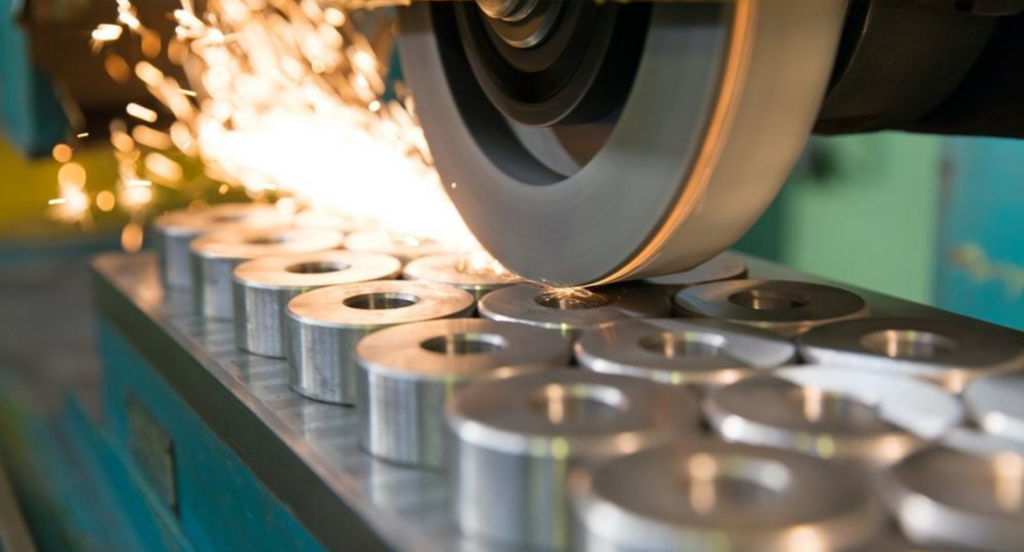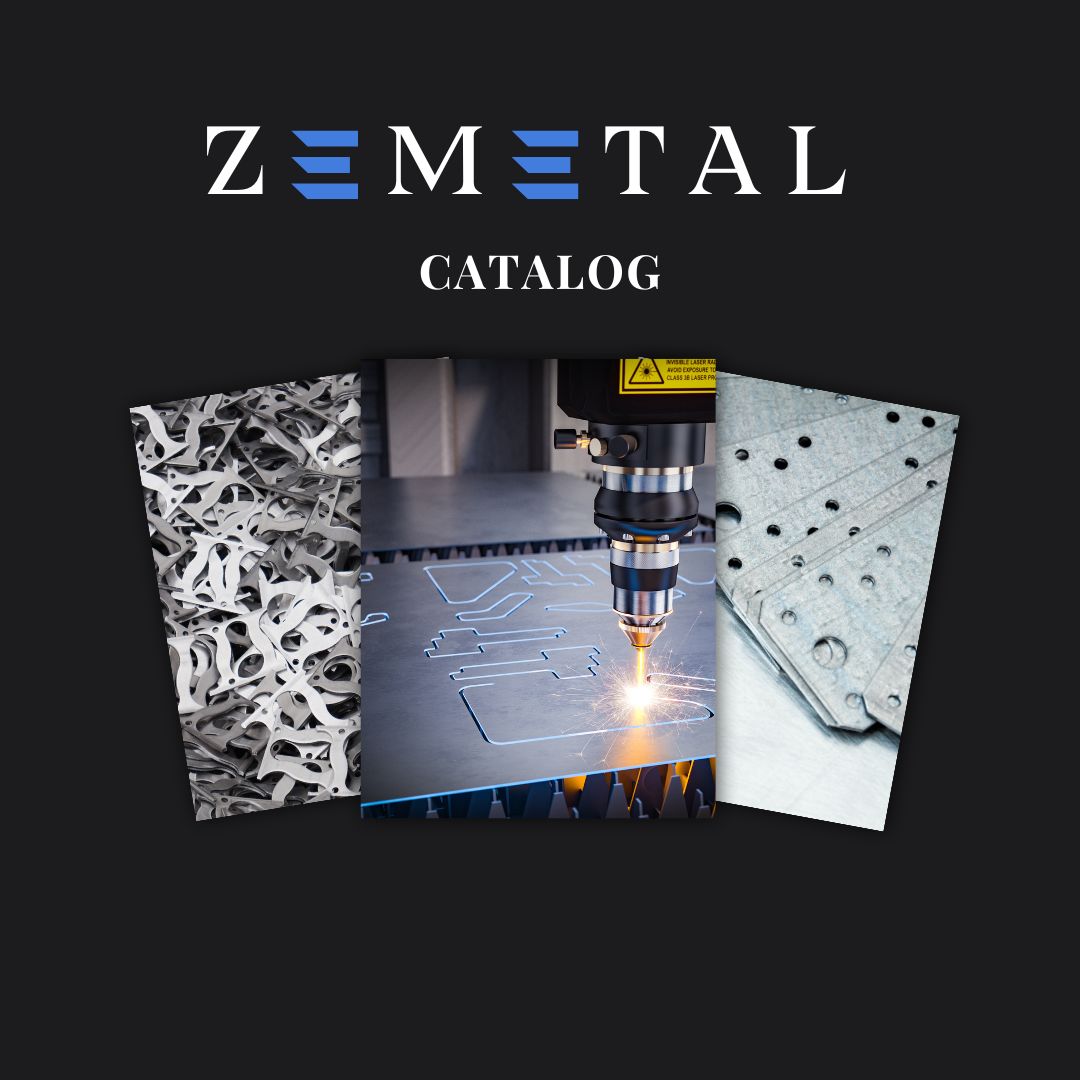Are you considering a new finish for your metal products? Grasping the differences between powder coating and electrostatic painting is crucial for making an informed decision.
With a focus on the latest industry standards and technological advancements, this guide offers insights backed by extensive research and expert opinions.
While powder coating is renowned for its strength and eco-friendliness, ideal for items requiring longevity, electrostatic painting excels in providing a flawless finish and vibrant color options, especially suited for complex designs.
In this guide, we will navigate through the details of each method, their benefits, limitations, and ideal use cases, providing you with the knowledge to make informed decisions.
Read on for key insights into these vital metal finishing techniques.
1. Brief Overview of Metal Fabrication Finishes
In the world of metal fabrication, the finish of a product is not just about aesthetics; it’s crucial for durability and longevity. A suitable finish protects metal from corrosion, wear, and environmental factors, thereby extending its life. The choice of finish can also significantly impact the product’s appearance, enhancing its appeal to customers.
From traditional methods like painting and anodizing to modern techniques such as powder coating and electrostatic painting, the evolution of finishing techniques has been driven by the need for more durable, environmentally friendly, and cost-effective solutions. Each method comes with its own set of advantages, depending on the application and desired outcome.

2. Understanding Powder Coating
Powder coating is a highly durable, dry finishing process used extensively in the metal fabrication industry. It involves electrostatically applying a mixture of fine powder particles, typically comprising resin and pigment, to a surface before curing it in an oven. This method not only provides a tough, uniform finish but is also environmentally friendly, releasing minimal volatile organic compounds (VOCS).
Industry Uses of Powder Coating
- Automotive Parts: Commonly applied to car frames, wheels, bumpers, and engine parts, powder coating provides a strong, corrosion-resistant finish that enhances the longevity and appearance of various automotive components.
- Appliances: Widely used in coating refrigerators, washing machines, dryers, and microwaves, it adds a durable and attractive finish to household appliances, protecting them from scratches and wear while enhancing their overall look.
- Industrial Equipment: Employed in coating machinery, tools, and metal structures in factories, this ensures that industrial equipment is protected from wear, tear, and corrosion, thereby extending its service life and maintaining its functionality in demanding environments.
Advantages of Powder Coating
- Enhanced Durability: Powder coating is known for its superior durability, providing a strong layer that effectively resists chipping, fading, and scratching. This makes it a preferred choice for items frequently exposed to challenging environments.
- Eco-Friendly Option: Unlike liquid paints, powder coating does not release VOCs, making it an eco-friendly choice for businesses aiming to be environmentally sustainable.Global Market Insights forecasts a 5.5% CAGR in the powder coatings market from 2023 to 2032, led by VOC reduction efforts.
- Aesthetic Flexibility: With its wide range of colors and textures, this offers significant aesthetic versatility. This allows for more creative and customized finishes to meet diverse design preferences.
Disadvantages of Powder Coating
- Application Limitations: Powder coating cannot be applied to all metal types, particularly those that cannot withstand high curing temperatures. This limitation can restrict its use in various metal fabrication scenarios.
- Higher Initial Costs: The initial setup and equipment costs for powder coating can be higher compared to other finishing methods. This might be a significant consideration for smaller businesses or those with limited budgets.
- Complex Color Changes: Changing colors during the powder coating process can be time-consuming and complex, potentially leading to longer production times, especially when dealing with multiple color requirements in a single production run.
3. Exploring Electrostatic Painting
Electrostatic painting is a method that employs electrically charged paint to achieve an even and thorough coating on metal surfaces. This technique is especially effective for detailed and complex designs, ensuring a uniform layer of paint. The process not only enhances the aesthetic appeal of metal products but also contributes to their longevity and resistance to wear.
Industry Uses of Electrostatic Painting
- Architectural Metalwork: For architectural details like metal panels and sculptures, electrostatic painting is a preferred choice. It offers a high-quality finish that highlights the craftsmanship and design of architectural elements.
- Medical Equipment: This is extensively used in coating hospital bed frames, surgical tools, and medical carts. This method ensures a durable and hygienic finish, vital for maintaining cleanliness and safety in medical environments.
- Fitness Equipment: For gym and fitness centers, this is used on weight machines, metal lockers, and exercise frames. It provides a strong coating that can endure constant use and sweat exposure, keeping equipment both functional and visually appealing.
Advantages of Electrostatic Painting
- Better Adhesion: This process ensures better paint adhesion to metal surfaces, creating a strong bond that enhances the longevity of the finish. This results in less frequent need for touch-ups or repainting.
- High-Quality Finish: Electrostatic painting is renowned for its ability to produce a smooth, high-quality finish. This technique ensures an even coat, enhancing the appearance of the metal surface.
- Efficient Application: The electrostatic painting process is efficient, minimizing overspray and paint waste. It’s particularly effective for complex shapes and surfaces, ensuring uniform coverage with less effort.
Disadvantages of Electrostatic Painting
- Specialized Equipment and Skill Required: This method requires specialized equipment and skilled operators, which can increase the complexity and cost of the painting process. It’s not as easily accessible for small-scale or DIY projects.
- Limited to Conductive Materials: Electrostatic painting is effective only on conductive materials. This limitation restricts its use, making it unsuitable for a range of non-conductive materials that are common in various industries.
- Environmental and Health Concerns: While providing a high-quality finish, this process can involve the use of hazardous materials and solvents. These substances require careful handling and disposal, posing potential environmental and health risks.
4. Key Differences Between Powder Coating and Electrostatic Painting
After carefully understanding both powder coating and electrostraric painting, it’s crucial to fully grasp the distinct characteristics that set them apart. Here are some of the key differences between the two:
Finish Texture and Consistency
- Powder Coating: This is renowned for its ability to produce a consistently thick and even finish. This texture is not only visually appealing but also adds a layer of protection to the metal. The final coating often has a slight texture, providing a unique tactile quality.
- Electrostatic Painting: Electrostatic painting typically results a smoother and more traditional-looking finish. The application of paint is done to prevent drips and imperfections, leaving a clean and polished finish. This method is ideal for projects where a smooth, glossy finish is desired.
Color and Finish Variety
- Powder Coating: One of the advantages of powder coating is its wide range of color options and finishes. It can achieve various visual effects. Examples of such include metallic, clear, and even fluorescent finishes. This versatility allows for greater customization in design projects.
- Electrostatic Painting: Electrostatic painting, while offering a range of colors, is somewhat limited in the variety of finishes compared to powder coating. However, it excels in achieving high-gloss finishes that mimic the look of traditional paint, making it suitable for projects requiring a classic aesthetic.
Application Speed and Efficiency
- Powder Coating: Powder coating is quicker than electrostatic painting, especially for large batches. The fast curing in the oven speeds up the overall process, ideal for high-volume projects. Zemetal provides efficient powder coating solutions, particularly beneficial for large batches of items.
- Electrostatic Painting: Electrostatic painting is a more time-consuming process, requiring careful application to achieve the desired finish. While it offers precision, the slower application speed may be a consideration for projects with tight deadlines or high production requirements.
Heat Sensitivity of Substrates
- Powder Coating: Powder coating, due to its high-temperature curing process in an oven, may not be suitable for heat-sensitive materials, limiting its application range. For example, lightweight aluminum alloys are often powder-coated for both protection and aesthetics.
- Electrostatic Painting: Electrostatic painting, unlike powder coating, does not need high curing temperatures. It’s ideal for various metal substrates, especially those sensitive to heat, providing versatility for metals that cannot handle the heat of powder coating.
Longevity and Maintenance
- Powder Coating: Powder-coated finishes are known for their long-term durability and low maintenance requirements. The thick, hard coating is more resistant to scratches, fading, and weathering, making it ideal for outdoor or heavy-use items.
- Electrostatic Painting: While electrostatic paint provides a durable finish, it may require more maintenance over time, especially in harsh environments. The paint is prone to chipping and wear, necessitating touch-ups or reapplications to maintain its appearance.
This table details the characteristics and maintenance considerations of electrostatic painting, underscoring the need for upkeep, especially in challenging environments.
| Aspect | Description | Maintenance Implication |
| Durability | Electrostatic paint offers a strong finish but can degrade | Requires periodic maintenance |
| Chipping Susceptibility | Prone to chipping in harsh conditions | Frequent inspections and touch-ups needed |
| Wear and Tear | Susceptible to wear over time | Regular reapplications may be necessary |
| Environmental Impact | Performance varies in different environmental conditions | More maintenance in harsh environments |
| Aesthetic Maintenance | Maintains appearance but needs attention to retain quality | Consistent upkeep for visual appeal |
5. 4 Factors to Consider When Choosing Between the Two
Following the key differences of powder coating and electrostatic painting, evaluating multiple aspects when choosing between the two is vital to achieve operational efficiency. Here are essential factors to keep in mind:
#1 Application Process Complexity
The complexity of the application process is a critical factor. Powder coating often requires a simpler setup with less specialized equipment, making it a more accessible option for many operations. Electrostatic painting, however, demands more detailed machinery and skilled labor due to its precision application, which can be a deciding factor for facilities with limited resources or expertise.
#2 Surface Texture Requirements
The desired surface texture of the finished product is another important consideration. Powder coating offers a thicker, textured finish for added grip and durability. While electrostatic painting provides a smoother, finer finish, ideal for a stylish, glossy appearance. Zemetal provides both finishing methods, offering tailored solutions to meet the specific needs of every products.
#3 Operational Environment
The environment in which the finished product will be used plays a significant role in the decision-making process. For products exposed to harsh outdoor environments or extreme conditions, powder coating’s superior resistance to weathering, UV rays, and corrosion makes it a more suitable option. Electrostatic painting, while offering a high-quality finish, may not withstand these conditions as effectively.
#4 Health and Safety Concerns
The health and safety aspects of each technique should not be overlooked. Powder coating, a dry process, significantly reduces spillage and exposure to volatile organic compounds. Conversely, electrostatic painting, which employs liquid paints, presents hazards like inhalation and skin contact. Therefore, it’s crucial to choose the right method based on both efficiency and the specific health and safety requirements of the environment.
Conclusion
Understanding the differences of powder coating and electrostatic painting is essential for achieving best results in metal fabrication. This guide has been crafted to enhance your knowledge, providing a foundation for informed decision-making in selecting the appropriate finishing method for your project.
Dive deeper into the world of advanced metal finishes with Zemetal. We’re here to offer cutting-edge solutions and expert advice tailored to your specific needs. For personalized guidance and support, contact us today.
Dive Deeper Into Our Resources
For some insightful reads, we’ve curated a list of recommended articles just for you:
Still haven’t found what you’re looking for? Don’t hesitate to contact us. We’re available around the clock to assist you.








